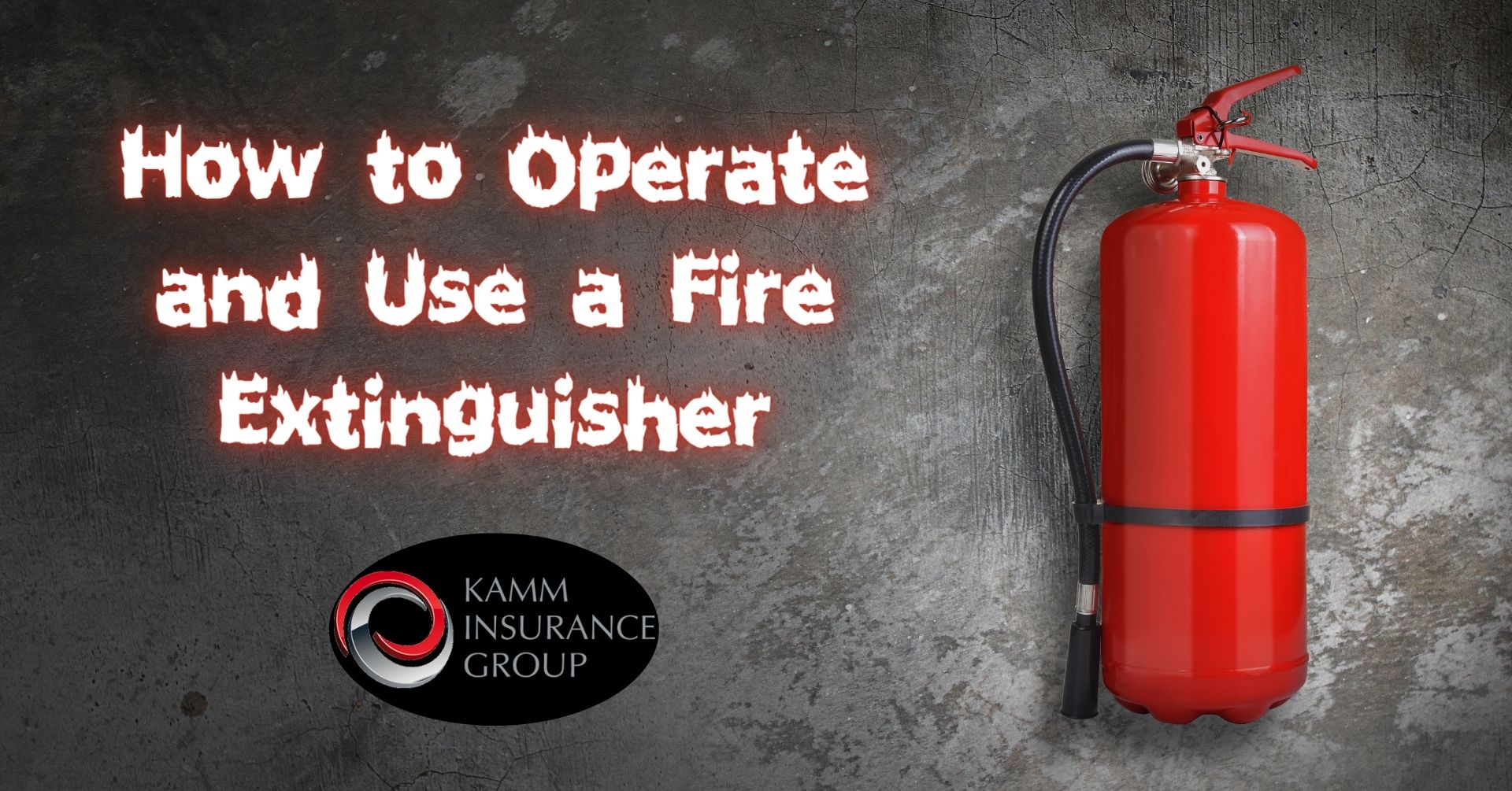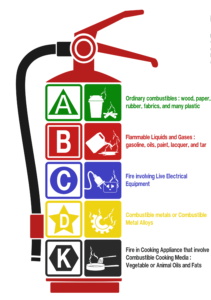
All homes and businesses should have fire extinguishers on hand, and not just stashed in a supply closet, never to be seen again. Though we all hope we’ll never need to use it, it’s imperative to know how to use a fire extinguisher. There’s no excuse not to learn! We even carry online fire extinguisher training that you and your employees can complete in less than half an hour.
First, make sure you have the right type of fire extinguisher.
There are five classes of fires, depending on what the fuel is, and fire extinguishers are labeled based on the classes of fire they’re designed to fight.

Class B: These are fires fueled by flammable liquids or gases, such as oil, gasoline, alcohols, solvents, and propane gas.
Class C: These are fires are started or fueled by electricity. Class C fires might ignite due to faulty wiring, an improperly configured outlet or circuit panel, or a malfunctioning appliance.
Class D: There are fires are fueled by combustible metals. These are typically only seen in industrial settings that work with these metals.
Class K: These are cooking fires, usually caused by culinary fats or alcohols.
Most household or office fire extinguishers are labeled to fight A, B, and C class fires. Fire extinguishers for Class K fires are typically sold separately, but no commercial kitchen should be without a few. If your business works with metals that require class D fire extinguishers, make sure to consult a supplier in your industry. If you see a circle and a red slash through any of the labels on your fire extinguisher, that indicates that it cannot be used for that type of fire.
Now that you have to right fire extinguisher, make sure you know how to use it. If you’re faced with a fire:
- Identify a clear escape route.
A small fire can quickly grow, so even before you start trying to fight it, make sure you and anyone else in the building can get out quickly. Ideally, you’ll have mapped out your exit routes ahead of time and prepared your staff (or family members if this is at home) with fire drills. And if you have any doubt about your ability to fight the fire with the extinguisher you have, get out right away. Close doors behind you, as that can help contain the fire.
- Have someone call the fire department.
Even if you think the fire is small enough for you to fight with an extinguisher, call the fire department anyway. You’ll still want an expert to make sure to completely put out the fire. And if the fire grows beyond your capacity to fight it with an extinguisher, you’ll be glad the firefighters are already on their way.
- If you decide to try fighting the fire, stand back.
If the fire is small enough for you to try to fight it yourself, grab your extinguisher. Face the fire and keep your back to your exit route. Try to stay between six and eight feet away from the flames.
- Discharge your extinguisher, using the PASS process.
P: Pull the pin on the fire extinguisher.
A: Aim the nozzle on the hose as close to the base of the fire as you can get.
S: Squeeze the handle to discharge the extinguisher.
S: Sweep the nozzle back and forth. Keep sweeping from side to side until the flames are extinguished or your fire extinguisher runs out of material.
- Continue to monitor the site until firefighters confirm the fire is completely extinguished.
Even if the fire looks like you’ve successfully extinguished it, keep an eye on the site until the firefighters arrive. Once the professionals arrive, take them to the site and wait for them to confirm it’s no longer a threat before bringing everyone back into the building.
The best way to keep your home or business safe in the event of a fire is to be prepared. Map out exit routes ahead of time, and do fire drills to make sure everyone in your building knows them. Get to know your fire extinguishers and regularly review how to use them. Commit to regular training to make sure you and your employees know exactly what to do in the event of a fire and precautions they can take to prevent fires from starting in the first place.
At Kamm Insurance Group, we will help you make sure you have the insurance coverage you need in the event of a fire. We also offer training in fire prevention and fire extinguisher safety, partner with insurance carriers who will inspect your business for fire hazards, and can recommend restoration companies in case you do experience a fire loss.
Source: https://www.safewise.com/blog/prepared-properly-use-fire-extinguisher/



